- News
- Science
- Scientific Bodies
- Divisions
- Commissions
- Commission A1 Structure
- Commission A2 Structure
- Commission A3 Structure
- Commission A4 Structure
- Commission B1 Structure
- Commission B2 Structure
- Commission B3 Structure
- Commission B4 Structure
- Commission B5 Structure
- Commission B6 Structure
- Commission B7 Structure
- Commission C1 Structure
- Commission C2 Structure
- Commission C3 Structure
- Commission C4 Structure
- Commission D1 Structure
- Commission E1 Structure
- Commission E2 Structure
- Commission E3 Structure
- Commission E4 Structure
- Commission F1 Structure
- Commission F2 Structure
- Commission F3 Structure
- Commission F4 Structure
- Commission G1 Structure
- Commission G2 Structure
- Commission G3 Structure
- Commission G4 Structure
- Commission G5 Structure
- Commission H1 Structure
- Commission H2 Structure
- Commission H3 Structure
- Commission H4 Structure
- Commission J1 Structure
- Commission J2 Structure
- Commission J3 Structure
- Commission X1 Structure
- Commission X2 Structure
- Past Commission Organising Committees
- Working Groups
- Centres
- Scientific Meetings
- Rules & Guidelines
- General Assemblies
- Meeting Proposals
- Future IAU Meetings
- General Assemblies
- EC Meetings
- Officers' Meetings
- Regional Meetings
- Symposia
- Focus Meetings
- Institutional Meetings
- IAU Offices Meetings
- IAU-Sponsored Meetings
- Letters of Intent submitted for 2024
- Letters of Intent submitted for 2023
- Letters of Intent submitted for 2022
- Letters of Intent submitted for 2021
- Letters of Intent submitted for 2020
- Past IAU Meetings
- Templates
- Other Meetings
- Grants & Prizes
- Scientific Bodies
- Publications
- IAU Publications
- IAU Strategic Plan
- Symposia
- WGSBN Bulletins
- Regional Meetings
- Information Bulletins/Catalyst
- E-Newsletters
- Focus Meetings
- Transactions A
- Transactions B
- Related Publications
- GA Newspapers
- CAPjournal
- IAU Books
- Brochures
- IAU Offices
- WG Reports
- Commission Reports
- Division Reports
- Past IAU Publications
- Rules, Guidelines and Instructions for Proceedings
- Publishers
- IAU Publications
- Administration
- About the IAU
- Statutes & Rules
- IAU Policies
- IAU Executive Bodies
- IAU Secretariat
- Resolutions
- Members Administration
- Administrative Dates & Deadlines
- International Organisations Relations
- Donate to the IAU
- Training in Astronomy
- Astronomy for Education
- Astronomy for Development
- Astronomy for the Public
- Office for Astronomy Outreach
- FAQ
- Themes
- Satellite Constellations
- Astronomy in Everyday Life
- How to Report a Discovery
- Careers in Astronomy
- Defining our Place in the Cosmos
- The Constellations
- Light Pollution
- Measuring the Universe
- Near Earth Objects
- How to Participate in Astronomy Research
- Naming of Astronomical Objects
- Naming of Exoplanets
- Buying Star Names
- Naming Stars
- Pluto and the Solar System
- IAU Member Statistics
- Our Moon: the Moon
- Meteors & Meteorites: The IAU Definitions of Meteor Terms
- UNESCO-IAU Portal to the Heritage of Astronomy
- Social Media
- Past Events
- Call for Online Resources
- Astronomy@Home Awards
- Contact
IAU Member Statistics
- Introduction
- IAU Membership Growth
- IAU Demographics
- IAU Gender Distribution
- IAU Age Distribution
- More Information
- IAU Links
- Contacts
Introduction
The IAU is a truly international body, with a total membership of 12754 (of which 1224 are Junior members). The number of Active Individual and Junior Members in the IAU Directory is: 12383 from 92 different countries across all continents (for the latest data go here). To better understand the unique characteristics of our membership, and to address the needs of our community in a more informed way, the International Astronomical Union has prepared an analysis of its membership numbers across the globe. In this IAU Theme, you can find an overview of the IAU data collected, showing the number of National Members present up to 2022, as well as Individual and Junior Members categorised by age-group, country affiliation and gender.
IAU Membership Growth
The IAU celebrated its centennial anniversary in 2019 and in its almost century old existence its membership growth reflects the many societal, political and scientific changes the world has been through throughout this time span. Figure 1 shows the evolution of the IAU Membership Growth from 1922 to 2022, in which we can see an expected general growth, having a clear steepness around the mid-sixties, with the “space race” and the adherence of new Asian countries and IAU’s public visibility due to the Pluto issue as possible sources for this increase in slope. A decrease in members after 2020 reflects a decision taken by the EC upon the suggestion of the National Members to remove Inactive members after more than 3 years of inactivity.
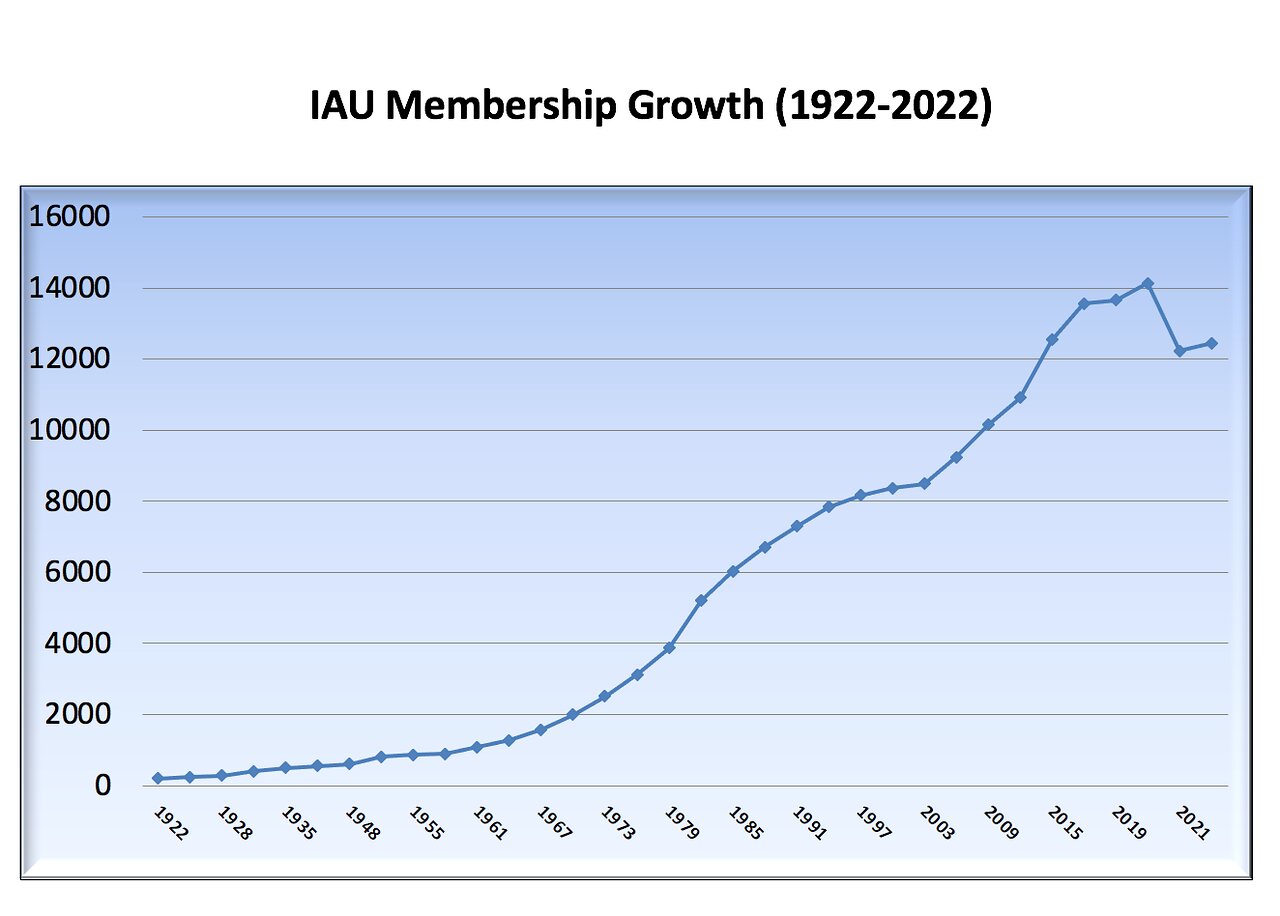
Figure 1: IAU Membership Growth from 1922 to 2022 (total members, including both active and inactive). Note that the decrease in members from 2020 is due to a decision taken by the EC to remove Inactive members after 3 years of inactivity. Source: IAU. (Please, find more information here)
IAU demographics
The IAU has three different types of membership: National Members, which are organisations representing national professional astronomical communities, Individual Members, who are professional scientists whose research is directly relevant to some branch of astronomy, and therefore eligible for membership (IAU Affiliation) and Junior Members. Figure 2 shows the evolution of the number of IAU National Members from 1920-2022, running from eight members back in 1920 to 2022 with 85 National Members.
The newer category of membership, the Junior Member, was approved at the XXX General Assembly (Vienna, August 2018). The Junior Member is a researcher in some branch of astronomy that has just completed his/her PhD and has the intention to continue to work in the field of astronomy. Junior Members may be admitted into the Union every year for a maximum period of six years, after which they may qualify as Individual Members. It is expected that the admission of the Junior Members will substantially modify the age and gender distributions.
It should be noted that beginning in 2018 a new category of membership was added as well: 'Honorary Membership.' This applies to individuals who have substantially contributed to the development of astronomical research in their country, who are not professional astronomers and do not qualify as Individual Member under the provission of art.III 4. These members are not included in the membership statistics but are displayed on this webpage.
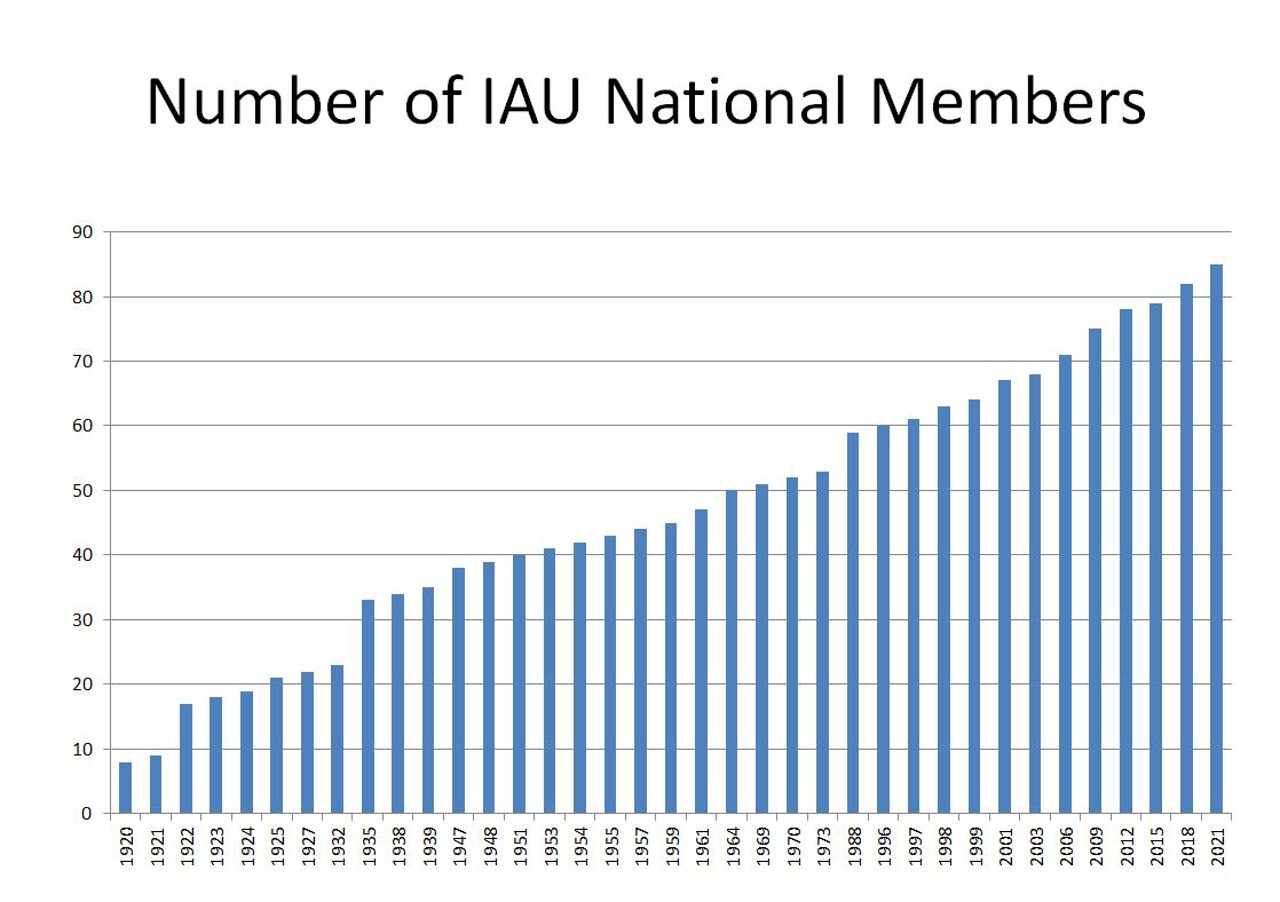
Figure 2 - Number of IAU National Members from 1920 to 2021. Please note that the member of National Members every three years shown may not reflect the number of new National Members joined in that year depending on if some past members were Terminated. Source: IAU. (Please, find the latest data here)
This analysis results in four key charts plotted according to the number of members in each country. Countries with fewer than 20 members are represented in Figure 3; with between 20 and 99 members in Figure 4, with between 100 and 399 members Figure 5, and, Figure 6, representing the data for countries with more than 400 members.
The age range of the members by country is shown in percentage bars, divided into eight categories (with a ten year interval) from the age of 20 to 99 years old. For reference, the number of members per country is also displayed (in black numbers above each bar or the number listed next to the country name), and the number of female members per age group per country is shown in white numbers inside each bar. The blank space above a bar accounts for members in a country for whom we lack age data. If there is no number written within a given bar and age-range it means there are no female astronomers in that age-range within the IAU for a given country.
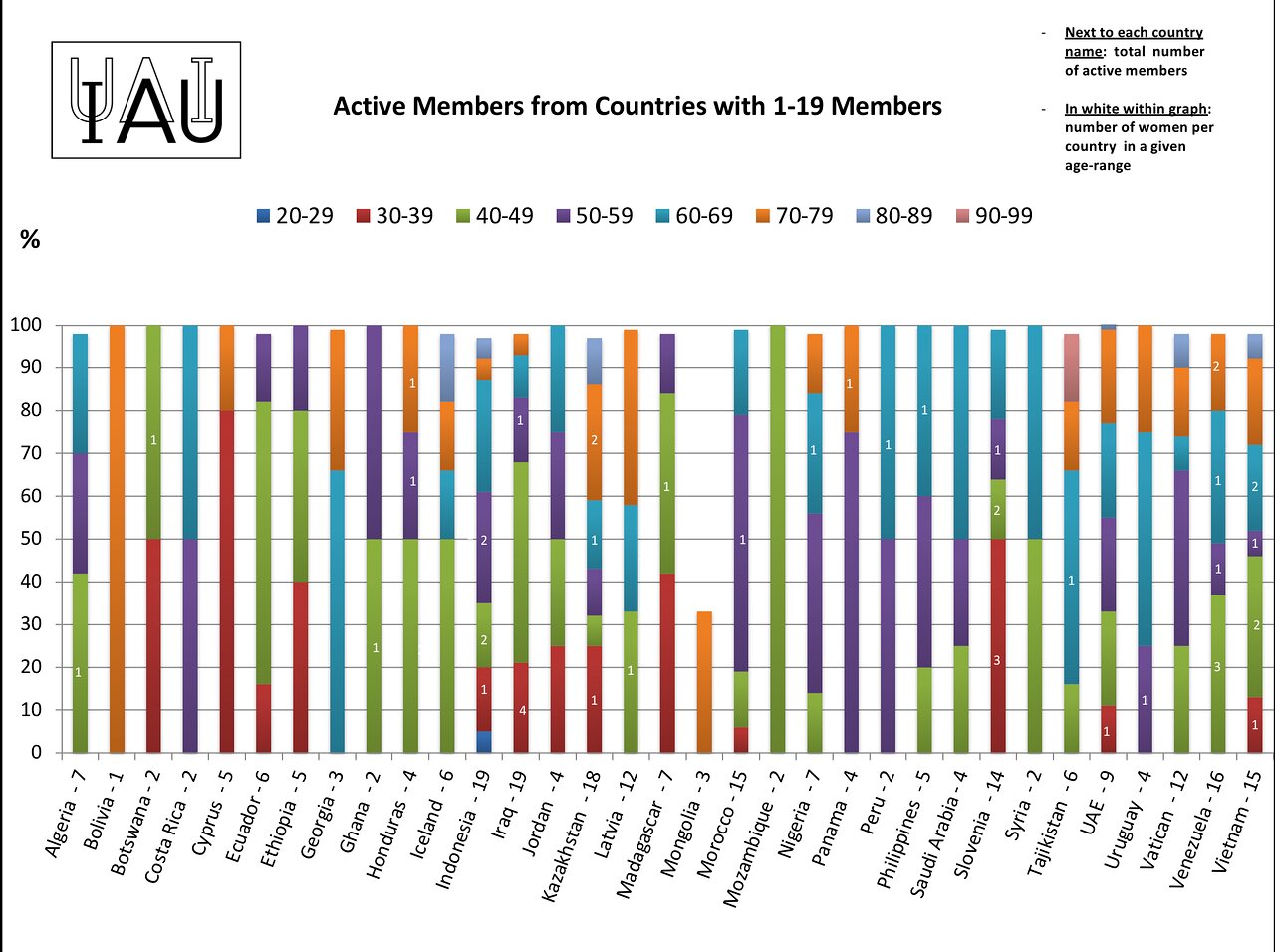
Figure 3 - Active members from countries with 1-19 members. (Data retrieved in December, 2022. Please, find the latest data here) (Note: Blank space percentage above a bar accounts for members for whom we lack age data.)
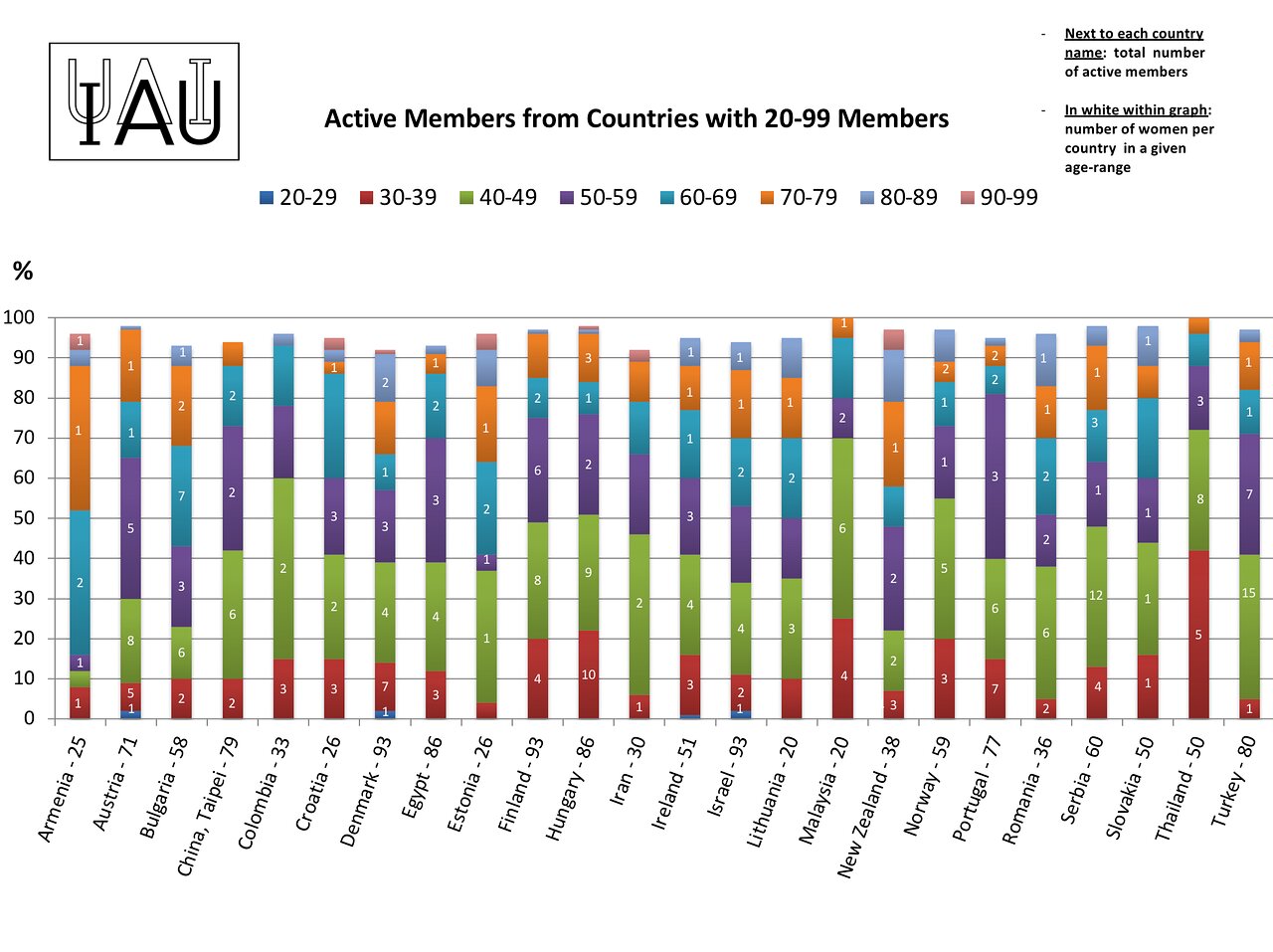
Figure 4 - Active members from countries with 20-99 members. (Data retrieved in December, 2022. Please, find the latest data here) (Note: Blank space percentage above a bar accounts for members for whom we lack age data.)

Figure 5 - Active members from countries with 100 to 399 members. (Data retrieved in December, 2022. Please, find the latest data here) (Note: Blank space percentage above a bar accounts for members for whom we lack age data.)

Figure 6 - Active members from countries with more than 400 members. (Data retrieved in December, 2022. Please, find the latest data here). (Note: Blank space percentage above a bar accounts for members for whom we lack age data.)
IAU Gender distribution
Across the entire membership of the IAU, only 21% are women (retrieved in January, 2023, for the latest data, please follow this link). That percentage is higher for Junior Members, for example in 2021 33% of Junior Members were female.
The Cornerstone Project “She is an Astronomer” during the International Year of Astronomy (IYA2009) started collecting statistics about female astronomers, taking a first look at the numbers across the world and finding considerable variations around different regions (Cesarsky, C. and Walker, H. (2010)). Severe deficiencies in proper (systematical) data collecting were also identified. Throughout the years, the IAU is firmly committed to increasing the number of women studying and working in astronomy, and maintains the Women in Astronomy Working Group to pursue this objective.
In 2016, the IAU successfully applied as a project partner to the International Science Council (ISC) grant program with the proposal: "A Global Approach to the Gender Gap in Mathematical and Natural Sciences: how to measure it, how to reduce it?". The program, led by the International Mathematical Union (IMU), will allow, for the first time, different scientific communities and international unions, to join forces in measuring and reducing the gender gap in the scientific community.
In 2015 74% of new Individual Members accepted into the IAU were male and 26% were female. In 2018 with the addition of the status of Junior Member included, the results improved with 69% of accepted Individual and Junior Members male and 31% female.
IAU Age Distribution
For this analysis our numbers refer to active IAU members. The term “young astronomer” refers to an IAU member aged between 25 and 45 years old. This range is divided into five categories of five years each — 20-25, 25-30 and so forth. This definition is distinct from other ways of analysing career development, such as years since obtaining a PhD.
In Table I, we see that 23% of our active membership falls within the age range of young astronomers. In addition, 15% falls within the 75-100 age-range. The largest proportion of IAU members in a 5-year range is tied between 50-55 and 55-60 years old — each of these categories alone comprises just over 11% of the total membership.
Over many years, the IAU has taken different actions to encourage young members to become actively involved within the work of the IAU. The IAU Office of Young Astronomers (OYA) and the IAU PhD prize as well as the additional category of Junior Members are all recent examples of these measures.
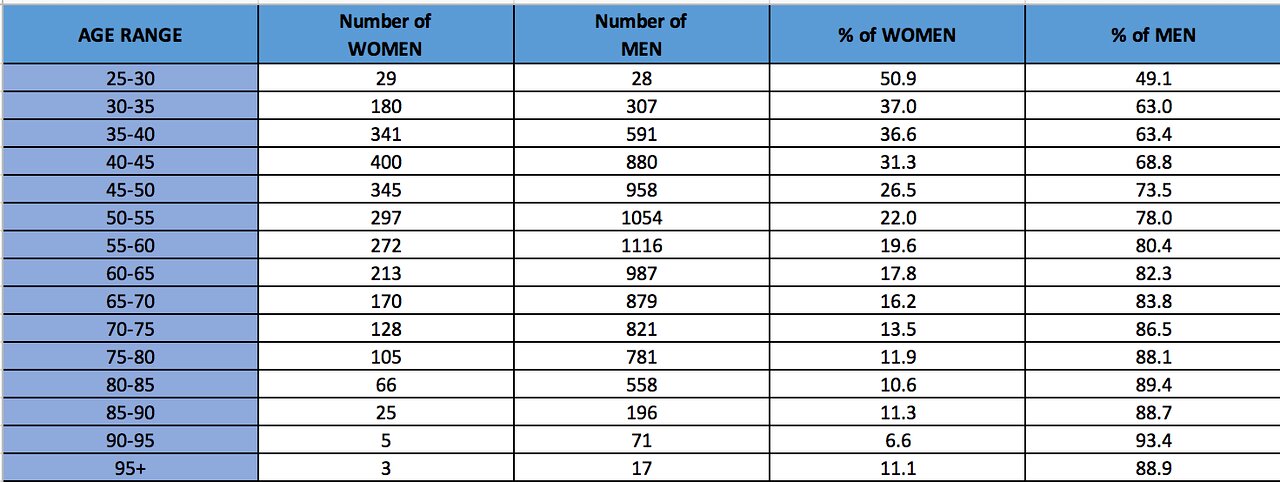
Table I: Total number and corresponding percentages in Gender within the IAU Active Members by age range. Please note that this does not include IAU Members for which we do not have a date of birth. (Source: IAU) (Data retrieved on January 1st, 2023. Please, find the latest data here)
More Information
Office of Young Astronomers (OYA)
The primary purpose of the OYA is to run the IAU program International Schools for Young Astronomers (ISYA). The OYA was established in 2015 by the Norwegian Academy of Science and Letters (NASL) and the International Astronomical Union (IAU) with the aim of ensuring a robust financial and organizational basis for the implementation of the ISYA program.
Women in Astronomy Working Group (WiA WG)
The WiA WG reports directly to the IAU Executive Committee (EC). It seeks to collect statistics on female participation in astronomy throughout all countries where astronomical research is conducted, and to also develop and execute strategies that help to achieve equity for women in this field.
IAU Links
- IAU Affiliation
- Distribution of Individual Members by Age and Number of Women per Member Country, Information as of: December, 2021
- Distribution of Individual Members by Age and Number of Women per Member Country, Information as of: December, 2020
- Distribution of Individual Members by Age and Number of Women per Member Country, Information as of: December, 2019
- Distribution of Individual Members by Age and Number of Women per Member Country, Information as of: December, 2018
- IAU Membership Statistics 2016
- Geographical and Gender Distribution of Individual Members
Information updated once per month) - Women in Astronomy Working Group Pursues Equality in Astronomy
- The Growth of the IAU (1922–2012)
- Cesarsky, C. and Walker, H. (2010), Head count: statistics about women in astronomy. Astronomy & Geophysics, 51: 2.33–2.36. doi:10.1111/j.1468-4004.2010.51233.x
- "A Survey on the Global Approach to The Gender Gap in Mathematical and Natural Sciences"
- Gender Gap in Science
- Members Joined per Year since 1994
Contacts
For further queries regarding the IAU Membership or statistics, please contact: iauinfos@iap.fr.

















